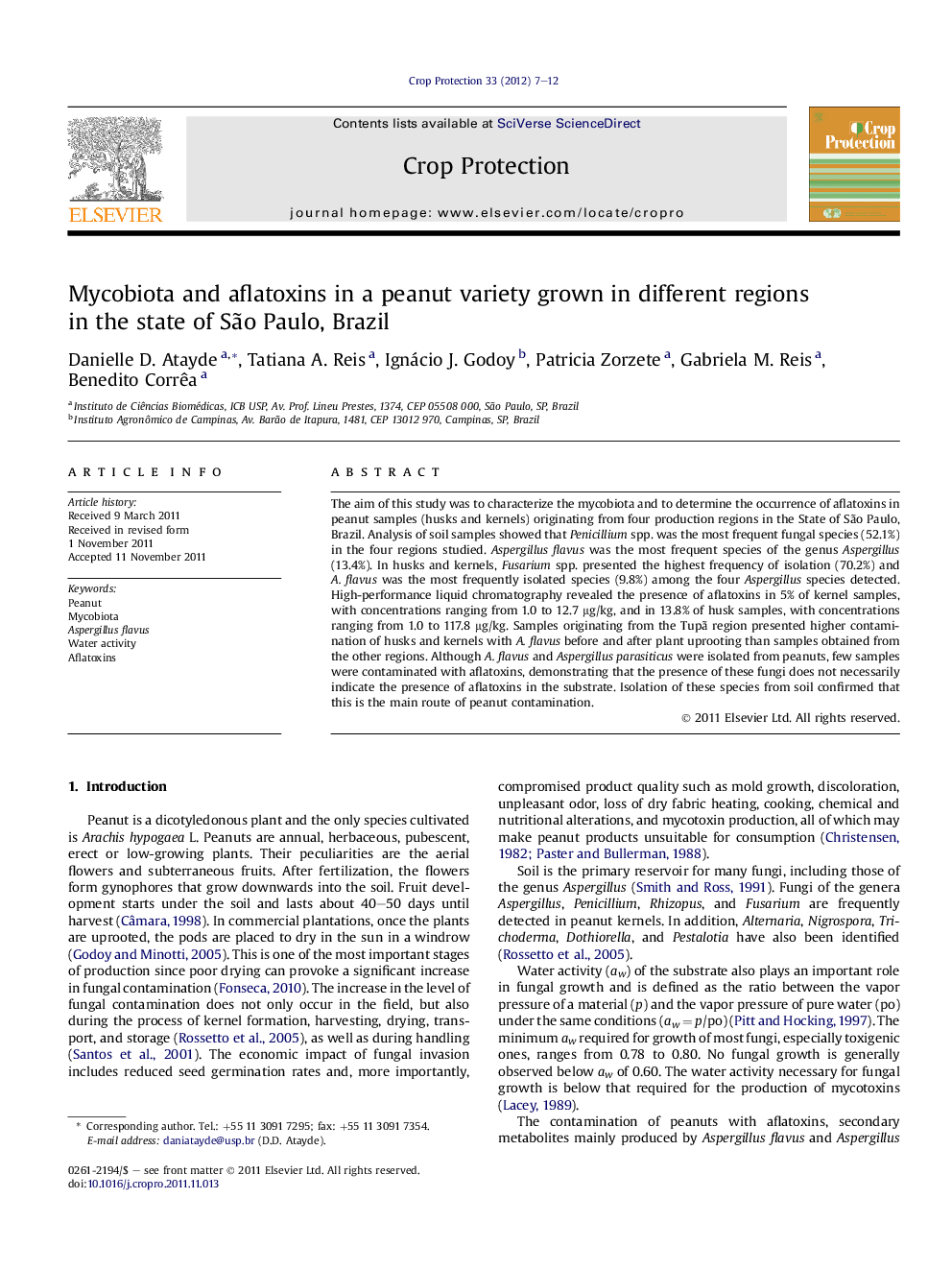| کد مقاله | کد نشریه | سال انتشار | مقاله انگلیسی | نسخه تمام متن |
|---|---|---|---|---|
| 4506353 | 1624354 | 2012 | 6 صفحه PDF | دانلود رایگان |

The aim of this study was to characterize the mycobiota and to determine the occurrence of aflatoxins in peanut samples (husks and kernels) originating from four production regions in the State of São Paulo, Brazil. Analysis of soil samples showed that Penicillium spp. was the most frequent fungal species (52.1%) in the four regions studied. Aspergillus flavus was the most frequent species of the genus Aspergillus (13.4%). In husks and kernels, Fusarium spp. presented the highest frequency of isolation (70.2%) and A. flavus was the most frequently isolated species (9.8%) among the four Aspergillus species detected. High-performance liquid chromatography revealed the presence of aflatoxins in 5% of kernel samples, with concentrations ranging from 1.0 to 12.7 μg/kg, and in 13.8% of husk samples, with concentrations ranging from 1.0 to 117.8 μg/kg. Samples originating from the Tupã region presented higher contamination of husks and kernels with A. flavus before and after plant uprooting than samples obtained from the other regions. Although A. flavus and Aspergillus parasiticus were isolated from peanuts, few samples were contaminated with aflatoxins, demonstrating that the presence of these fungi does not necessarily indicate the presence of aflatoxins in the substrate. Isolation of these species from soil confirmed that this is the main route of peanut contamination.
► Penicillium spp. were more prevalent in soil mycobiota and Fusarium spp., in peanut.
► Within the genus Aspergillus, Aspergillus flavus was the most frequent in both samples.
► Aflatoxins were present in 5% of kernel samples and in 13.8% of the husks.
► Samples from the Tupã region presented higher contamination by A. flavus.
► A. flavus occurrence in soil samples suggested a route for peanut contamination.
Journal: Crop Protection - Volume 33, March 2012, Pages 7–12